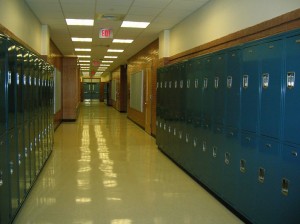
A high school made headlines recently when the auditorium was shut down so that the district could test to see if asbestos is present. The decision to inspect the auditorium was not taken as a precaution; rather, it was made after an environmental consultant was called in to examine part of the ceiling that was falling apart (and potentially on students). Although not released as a public statement to the students, families, and community, the Director of the local Health Department indicated that a section of the auditorium was already found to potentially contain asbestos.
This one publicized incident has families everywhere wondering whether the schools that they send their children to are safe concerning the potential presence of asbestos. According to some experts, if a school was built before the 1980s, it is more likely than not to contain asbestos. This is jarring to many, as around half of all schools in the states were built between 1950 and 1969. With asbestos in school buildings such as in the ceiling and other materials, it can eventually be inhaled by students and place them at risk for mesothelioma and other asbestos-related cancers. The biggest risk occurs when maintenance is done on school buildings; particularly if asbestos materials are removed unsafely. The only way to tell if airborne asbestos levels exceed federal safety standards is if the classrooms are tested. Regardless, in some of these schools, families chose to file claims against the district.
Federal Requirements When Dealing with Asbestos in Schools
The Asbestos Hazard Emergency Response Act requires school districts to:
- Have trained and licensed professionals perform an inspection every three years to determine if asbestos-containing materials are present;
- Develop and maintain an asbestos management plan;
- Provide updates to parents, teachers, and employees concerning asbestos management plans and any asbestos-related actions being taken or planned;
- Designate a contact person;
- Perform periodic surveillance of suspected asbestos-containing building material; and
- Provide custodial staff with asbestos-related training.
In addition, if there is any renovation or demolition occurring at the school, it must comply with the Asbestos National Emissions Standards for Hazardous Air Pollutants, which is geared towards minimizing the release of asbestos fibers during any activity that involves handling asbestos in schools or other buildings. Specifically, the owner of the operation must first notify the state agency before any renovations or demolition takes place. Before any asbestos-containing material is moved, certain practices must be employed, including wetting the materials, sealing it in leak tight containers, and disposing of it in accordance with regulations.
Let Us Assist You In Your Case
If you or a loved one has been diagnosed with a deadly, aggressive disease as a result of being exposed to asbestos in schools, the environmental hazard attorneys at Harrell & Nowak can help. We serve New Orleans and surrounding communities, and can help you tell your story and obtain justice. Contact us today for a free consultation.
